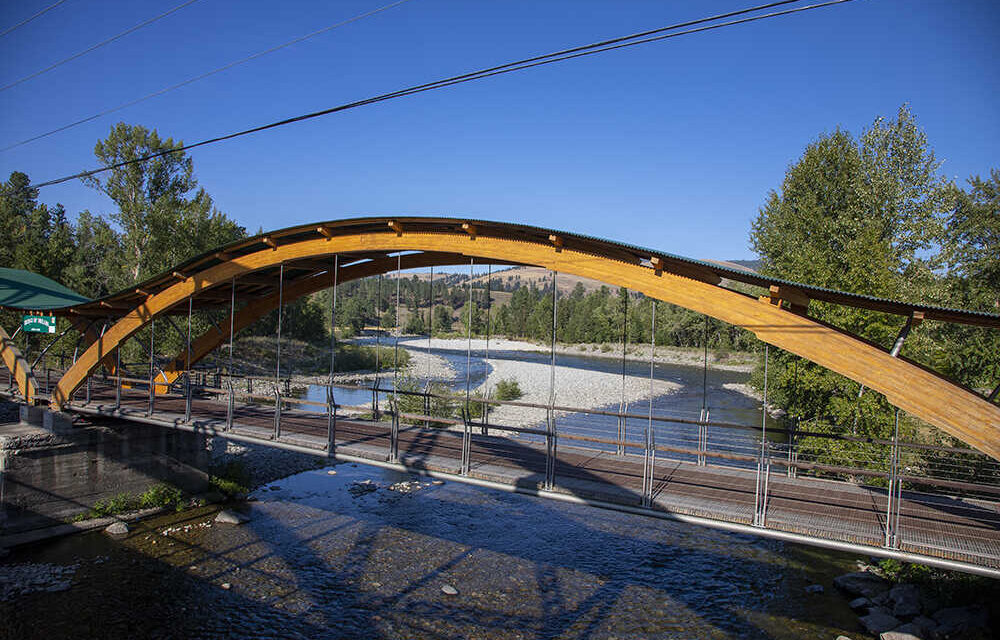Nestled between mountains and rivers, the Similkameen Valley is one of British Columbia’s last truly wild and untamed places. With its raw beauty, wide-open spaces, and deep-rooted cultural history, it’s no wonder people are drawn to this special corner of the province. But with that beauty comes responsibility.
Whether you’re here for a day trip, a weekend escape, or a longer stay, consider this your friendly guide to exploring the Similkameen as a “temporary local” — someone who not only visits but cares for the land, the people, and the stories that make this region unique.
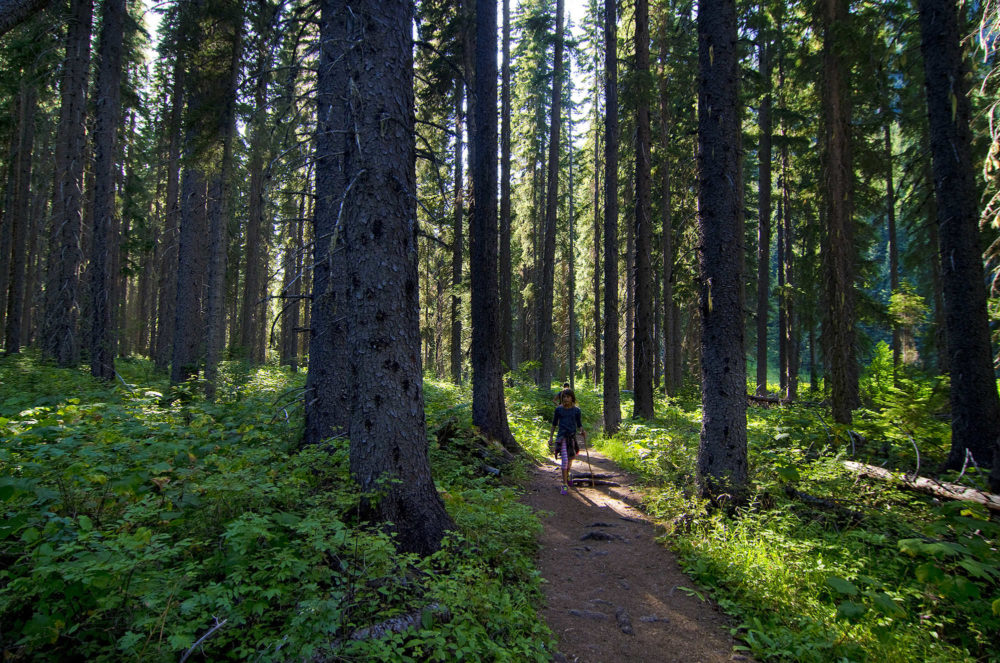
Leave It Better: On the Trails and Beyond
Wander the trails and backcountry of the Similkameen—whether you’re trekking through the alpine peaks of Cathedral Park (currently limited access due to fire damage), cycling the historic Kettle Valley Rail, or enjoying the peaceful forests of China Ridge, adventure here feels immersive and personal.
To help protect these landscapes and ensure a safe and respectful adventure, here are a few helpful tips for hiking and camping in the region:
- Plan by checking trail conditions, weather forecasts, and any local advisories before you go. Be prepared with the essentials: water, snacks, maps, sun protection, extra layers, and a first aid kit.
- Stay on marked paths to avoid trampling fragile vegetation and watch for signage about recent restoration efforts or trail conditions. Many groups in the region have been working hard to maintain access and repair erosion — your cooperation helps keep these places thriving.
- When you hit the trails, practice the “pack it in, pack it out” rule. That means anything you bring with you — snacks, wrappers, water bottles — comes back out with you. Even biodegradable items like fruit peels don’t belong on the trail; they can harm local ecosystems and attract wildlife.
- Respect wildlife by keeping your distance. Don’t feed animals, and avoid loud noises or sudden movements. You’re in their home — treat it with the same courtesy you’d hope for from a guest in yours.
*Note: Cathedral Park (Crater Creek Wildfire Area) has partial openings where Cathedral Lakes Lodge remains closed, with plans to reopen in 2026. Please check the current travel info for the latest conditions.
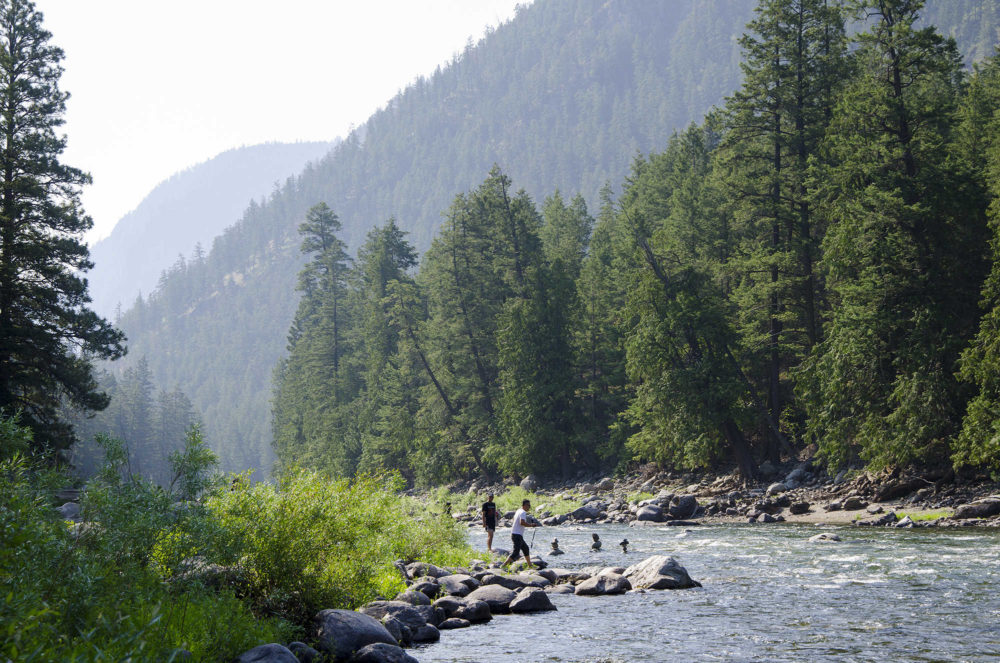
Water is Life: Rivers, Lakes, and Respect
The Similkameen River is vital to both local ecosystems and communities, serving as a lifeline that sustains biodiversity, agriculture, and cultural traditions. Flowing through the arid landscapes of southern British Columbia, the river supports diverse habitats for fish, birds, and wildlife, including salmon and endangered species, by providing clean, flowing water essential for survival.
For local communities, the river is central to irrigation, especially for orchards and vineyards, and plays a key role in the region’s economy. It also holds cultural and spiritual significance for Indigenous peoples, particularly the Syilx (Okanagan) Nation, who have long relied on the river for food, ceremony, and connection to the land. The Similkameen River is not just a natural feature—it’s a shared resource that binds ecosystems and people together.
Here are some tips for safe and respectful water use around the Similkameen River:
- Avoid using soap or shampoo, even biodegradable types, in any natural water source. These products can disrupt delicate aquatic ecosystems. Instead, use portable wash stations away from lakes and streams.
- Always pack out waste — including food scraps — to help keep water sources clean and safe for everyone, including downstream communities and wildlife.
- Keep dogs leashed near the river, and always pick up after them to prevent contamination.
- Minimize your impact by sticking to established trails and campsites near the water.
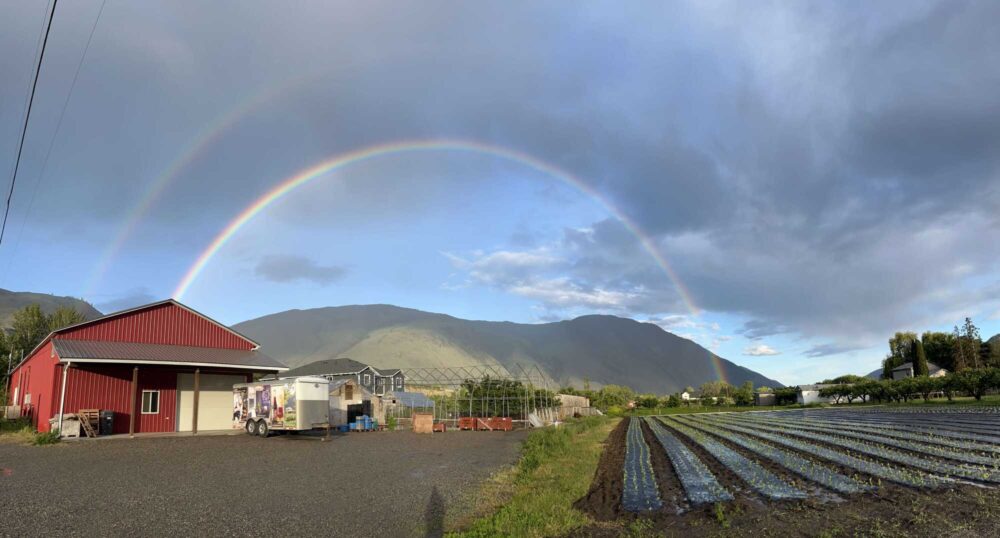
Farm Country Etiquette: Where Food Has Roots
Proudly known as being “farm strong,” the Similkameen boasts an abundance of orchards, vineyards, and family-run farms that are not only central to the local economy but they are part of the valley’s identity. Here, “farm to table” isn’t a trend — it’s Tuesday.
As you drive the back roads, be mindful of slower traffic, tractors, cyclists, and signage that may indicate active farming zones.
When you stop at a roadside stand or market, ask before taking photos. What may look like a charming moment is often someone’s livelihood. Handle produce gently, and only touch what you intend to buy. Some stands still run on the honour system — a testament to the trust in this community. Return that trust with respect.
For those curious about where their food comes from, consider joining a farm tour or attending an agricultural event. From u-picks to farm-to-table dinners, these experiences are a great way to connect more deeply with the region — and to support the hardworking folks who feed us.
Check out the events page for more information.

Cultural Respect: Listen First, Then Learn
Steeped in deep Indigenous presence and rich settler history, the Similkameen Valley is a land of stories passed down through generations, long before roads were built or resorts appeared.
Visiting here means stepping into that ongoing story.
Respect means more than acknowledgment — it’s about action and attitude. Be open, curious, and humble. If you visit Indigenous cultural sites, follow posted guidelines and ask permission if you’re unsure. Avoid tokenism or viewing culture as a performance. Instead, engage with intention — attend workshops, support Indigenous-owned businesses, and take time to learn from those who choose to share their stories.
Your presence here matters. How you behave leaves an impression, and being respectful helps foster more authentic and lasting connections.
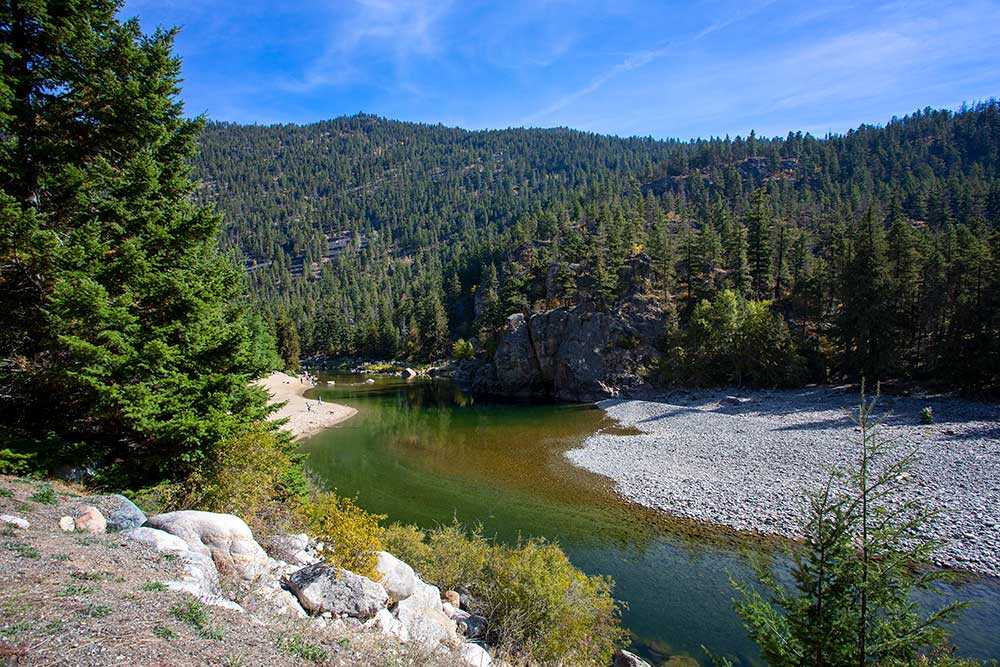
Waste, Water, and Wildfire Safety
With a drier climate and forested terrain, the Similkameen is particularly vulnerable to wildfires. If you’re visiting during summer, stay up to date on fire bans and restrictions. That includes understanding where campfires are allowed (if at all) and making sure any fire is completely out before you leave.
As part of sustainable travel, there are a few travel tips you can follow to allow for a more seamless and beneficial experience:
- Bring your own water bottle and refill it at local businesses or accommodations. It reduces single-use plastic and helps keep the valley clean.
- If you’re driving an electric vehicle, there are charging stations popping up throughout the region — a great step toward greener travel. Specifically in Princeton and Keremeos, the Visitor Centres have car chargers for your convenience.
Proper waste management is another key part of responsible travel. Bear proofing primarily involves managing bear attractants to reduce conflicts between humans and bears. Look for bear-proof bins, and if they’re not available, take your waste with you. Don’t leave food or scented items in your vehicle or campsite unattended — it’s unsafe for you and dangerous for wildlife.
Watch for zero-waste events or clean-up initiatives happening during your visit. These community-led efforts are often welcoming to visitors and a great way to give back, even in small ways.
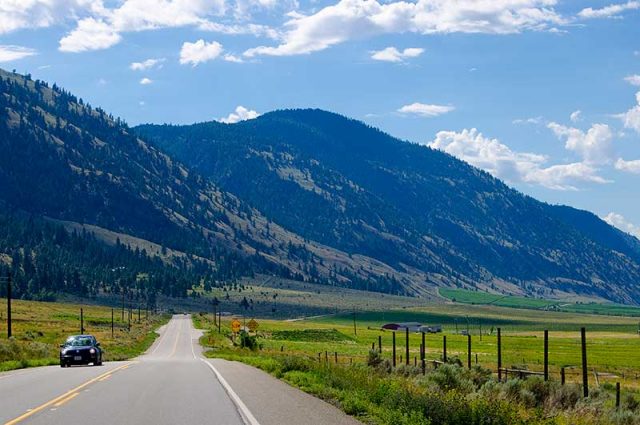
Stay informed on Travel Conditions
To stay informed and travel responsibly in the Similkameen Valley, it’s essential to monitor evolving travel conditions before and during your visit. The official Current Travel Info page advises relying solely on trusted, up-to-date sources like local Visitor Centres in Princeton, Hedley, Keremeos (Servicing Keremeos, Hedley and the Similkameen Valley), and Manning Park, as they maintain real-time updates on open trails, temporary business closures, and essential services.
Visitors are encouraged to download Alertable, an app delivering critical local alerts—such as road closures, evacuation notices, or wildfire warnings—directly to their phones. With ongoing restoration efforts following events like the Crater Creek fire, parks such as Cathedral are partially reopening. Please keep tabs on BC Parks bulletins for the latest access information. If you spot a wildfire in BC, immediately report it by calling 9-1-1 or *5555 from a cell phone.
Finally, always check Drive BC for updates on road conditions, closures, and live webcams before heading out. By staying informed, you can better respect local safety needs, minimize your impact, and ensure that your journey through this rugged, beautiful valley is both safe and considerate.
Adding to the Story: The Similkameen is more than a backdrop for your adventures — it’s shaped by its people, land, and stories. Travel in a way that adds to, rather than takes from, it.
Hike the ridgelines, sip the wine, float the rivers, and savour the farm-fresh fruit. But do so with care. Take only memories (and photos!), leave only footprints — and maybe a positive impression or two.



